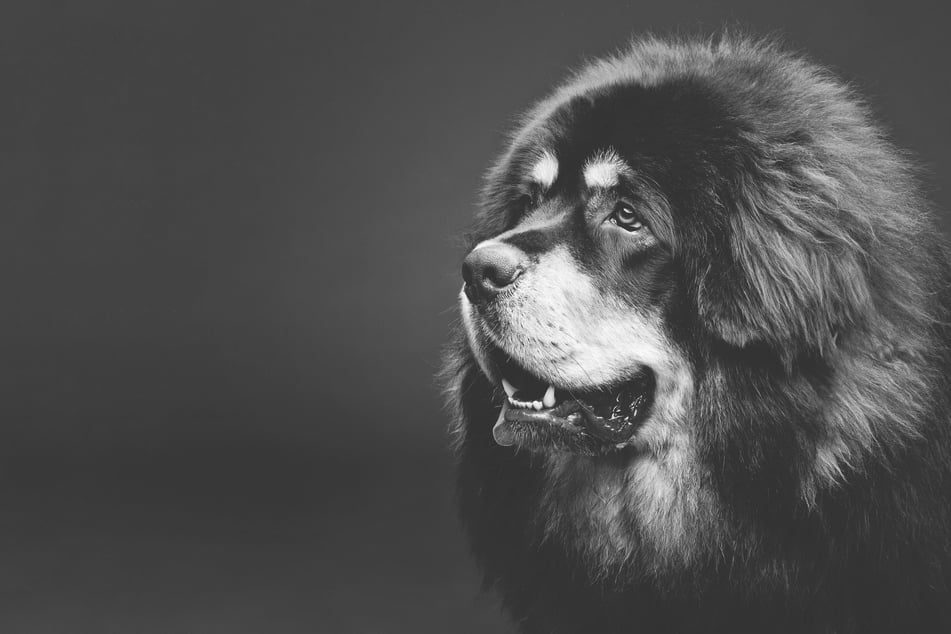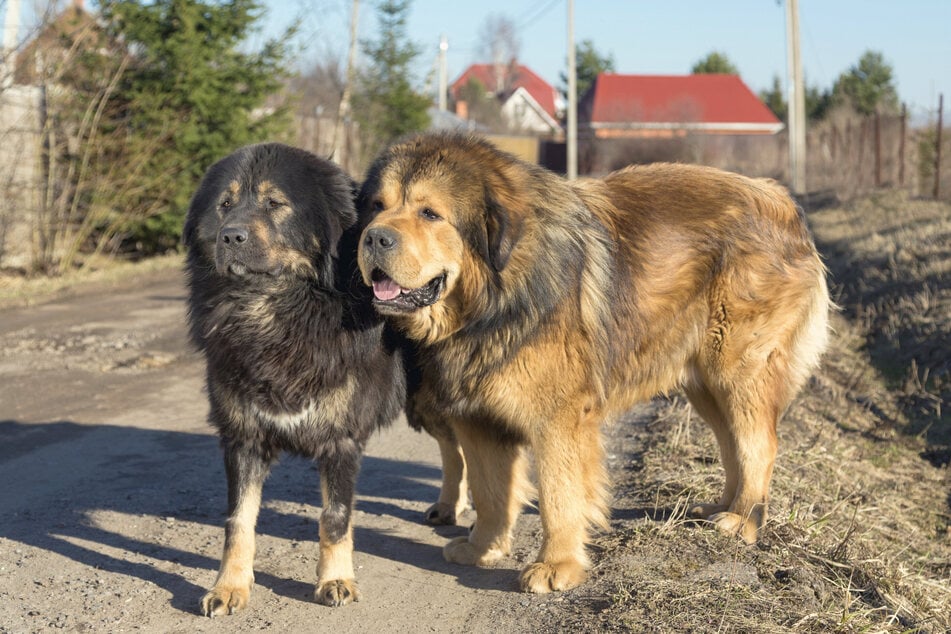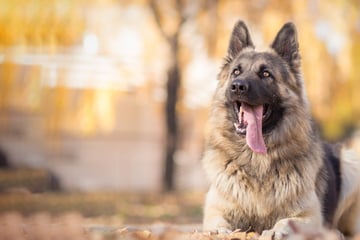Tibetan mastiff in profile: Size, personality, and lifespan
Tibetan mastiffs are a magnificent addition to families, and great with kids. Here's everything you need to know about these gentle giants. What are the characteristics of a Tibetan mastiff and how long will they be with you?

Famous for being giant, fluffy, and friendly, Tibetan mastiffs are some of the most beloved dogs known to man.
But they're also one of the more expensive breeds – so is it worth bringing one into the fold as a family member? Everything from personality and temperament to needs and expenses should play a part in making an informed decision.
In this dog guide, TAG24 is taking a close look at the Tibetan mastiff. How big are Tibetan mastiffs, and what do you need to know about their physical features? What should you understand about their personalities?
Let's dive in!
Tibetan mastiff size and characteristics
Tibetan mastiffs are a fascinating dog breed that have been used for fascinating purposes. As their names suggest, they were originally bred to protect Buddhist monasteries in Tibet. Suited to the high altitudes of the Himalayas and the Tibetan Plateaus, these giant dogs didn't come to Europe until the early 20th Century, when they were introduced by the then-Prince of Wales.
Fascinatingly, they didn't garner mainstream popularity until the 1980s. After this milestone had been hit, these big friendly giants started competing in all sorts of award shows within the UK, across Europe, and eventually, in the United States. They are similar to the likes of the Great Pyrenees, the Saint Bernard, and the Rottweiler, and have become similarly popular.
Tibetan mastiffs are famous for their size, their fluffiness, their friendliness, and their insane strength. They are big, tall, heavy, and have jaws that are similar in strength to that of a lion – seriously. Just how huge are they, though?
How big is a Tibetan mastiff?
The Tibetan mastiff is a huge dog, with a thick double coat (that can take on a variety of colors) that can get very long when left un-groomed and unkempt. Well over three feet long, with a giant lion-like face, they can look incredibly imposing when they try to threaten you. Luckily, though, there are few dogs more chilled out, loving, and calm than a Tibetan mastiff – there's a reason why they're considered safe for kids!
Tibetan mastiff height
Fully grown Tibetan mastiffs can get pretty tall, especially the males. Standing at your waist, their head often above your belly button, these are some of the biggest dogs in the entire world. Considering the sheer size of these dogs, it is often recommended that owners don't allow them to sit in their laps.
It's also important to clarify what we mean as a "fully grown" Tibetan mastiff. In short, a fully grown Tibetan mastiff is considered one that is between 18-months and 24-months in age. At this point they are at their physical best, and are at sexual maturity.
Here are the averages heights of male and female Tibetan mastiffs:
- Male: 25–30 inches tall on average
- Female: 20–25 inches tall on average
Important: If you adopt a Tibetan mastiff, you need to expect it to be absolutely massive. Make sure that your home is suitably sized, you can take it on plenty of walks, and that you have a yard.
Tibetan mastiff weight
Similarly to their height, male and female Tibetan mastiffs come in at different average weights, with females coming in at fewer pounds than their male counterparts. The reasoning behind this phenomenon is similar to that behind the physical differences between various human genders.
Here are the average weights of male and female Tibetan mastiffs:
- Male: 90–150 pounds on average
- Female: 70–120 pounds on average
These weights were pulled from the American Kennel Club, which has a database on many different dog breeds and their various characteristics.
Tibetan mastiff bite force in PSI
While not possessing the strongest dog bite (that honor goes to the Kangal), these giant doggos don't have a jaw to be sniffed at. The Tibetan mastiff bites with a strength of 550 PSI. This, of course, makes the dog excellent during a fight and helps to explain their widespread use as guard dogs throughout history. Indeed, these dogs are so strong that they are banned in multiple countries.
What does this mean, though? A PSI is a pressure measurement system that stands for "Pounds per square inch". A Tibetan mastiff with a bite strength of 550 PSI applies 550 pounds worth of pressure to every square inch being chomped upon.

Tibetan mastiff personality and temperament
Bred to guard Tibetan monasteries, you would expect Tibetan mastiffs to be rather violent, aggressive animals, but this couldn't be further from the truth. In reality, Tibetan mastiffs are calm, watchful, loving, and incredibly loving dogs that are protective of their families while being rather territorially inclined and distrustful of strangers.
You don't need to worry about your doggo attacking you or behaving in an aggressive or dangerous way if you own a Tibetan mastiff, but that doesn't mean that there aren't things you should consider before adopting them. These factors are what we'll discuss in the coming section.
Tibetan mastiff adoption: What to consider
Before adopting a Tibetan mastiff, it is important to consider their size, personality, and needs. Training is incredibly important for these dogs, so that their loyalty is backed up by obedience and a willingness to follow your commands and orders.
Here's what to consider when adopting a Tibetan mastiff
Size: These are huge dogs, and need a lot of space. A big apartment is not necessarily good enough, you will need a relatively big house with a yard. You also need to live in an area that lends itself to dog walking, with plenty of parks and some areas where you can set your dog loose.
Personality and temperament: Tibetan mastiffs are good family dogs but, due to their size, it isn't necessarily a good idea to keep them in a household with small children or babies. On top of that, your house should be quiet, with few strangers coming and going, and as permanent as possible.
Training: Your dog needs plenty of training, from a young age. You need the financial resources to pay for professional agility training, and you should be capable of teaching them plenty of commands so that they are as obedient and calm as possible. If you say "sit", you should be guaranteed that it will follow your instructions.
Tibetan mastiffs are calm and content dogs, but should be treated with the care that they deserve. Only get them if you have a life and job that lends itself to dog ownership, and live in a house that's big enough.
Tibetan mastiff lifespan

Tibetan mastiffs generally become "of age" when they are around 18–24 months, or about two years old. This generally coincides with the time at which most dogs become "mature", so it is not so surprising. Sadly, though, like most big dogs, they don't live for particularly long.
Small dogs typically live much longer than big ones, with the likes of the Chihuahua often living between 15 and 20 years. This means that, while you may want a four-legged giant, it's important to take into account its lifespan before adopting – and that goes double if you are adopting your doggo from a shelter, and not as a puppy.
As a large dog, Tibetan mastiffs will live an average of 10–12 years. Sometimes this length will be longer, but you will certainly start to see physical deterioration after around the 9-10 year mark.
The Tibetan mastiff is an adorable and loving pet!
While the Tibetan mastiff is a huge doggo that needs a lot of attention, training, and love, it's still an amazing family dog. These perfect pooches are unbelievably gorgeous, incredibly fluffy, and impressively calm and docile. Even with such a relaxed temperament, though, Tibetan mastiffs are some of the most loyal and protective dogs you can find.
They might look a little puffy, they might be insanely strong, but Tibetan mastiffs are, in reality, complete sweethearts. In many ways, they're the perfect pet – just remember to give them a regular brush, since they shed like crazy!
Cover photo: IMAGO/agefotostock




